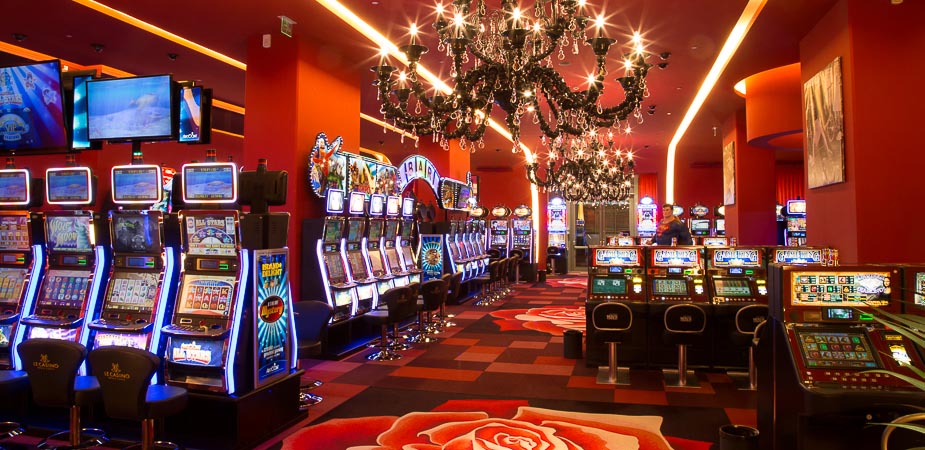In the dynamic and thrilling world of casinos, where fortune and strategy intertwine, color and design play a pivotal role in attracting players. As soon as visitors step inside a casino or log into a gaming platform, they are enveloped in a visual feast that grabs their attention and lures them to discover more. Bright colors, captivating graphics, and innovative layouts are carefully crafted to create an environment of thrill and expectation, ultimately improving the gaming encounter.
As gamblers navigate through the dynamic landscape of casino games, they come across a variety of designs that not only serve aesthetic purposes but also influence feelings and decision-making. Colors like red and gold symbolize wealth and fortune, while soothing blues and greens can create a much relaxed environment. Understanding how these elements function together enables casinos to create an inviting and energizing atmosphere that encourages players to engage with the games, invest additional time at the tables, and increase their general enjoyment.

The Science of Color in Gaming Establishments
Tint plays a key role in the development of gambling games, affecting players’ feelings and actions. Lively and bold shades, such as red and yellow, are often used to stimulate thrill and attract notice. These hues create a sense of pressure and energy, encouraging participants to involve themselves more readily with the activity. By thoughtfully selecting hues, creators aim to inspire emotions of pleasure and anticipation, which can enhance the overall gaming experience.
Different colors also have psychological associations that can influence how players perceive their odds of winning. For example, lime is commonly associated with fortune and prosperity, making it a popular choice in games like roulette and poker games. This association can cause players to feel more hopeful and self-assured in their gameplay, ultimately inspiring them to wager more. Understanding these links allows game designers to craft environments that enhance player satisfaction and retention.
In addition, the interface of gaming interfaces often utilizes gradients and differing shades to instruct player actions. For case, successful combinations may be highlighted with striking, contrasting hues, creating a visual reward. This technique reinforces favorable outcomes and encourages repeated participation. By exploiting the science of color, gaming venues can create games that not only attract participants but also hold them interested and committed in their play experience.
Creative Features that Engage Players
The aesthetic appeal of gambling games is primarily influenced by the implementation of vibrant colors. Lively and contrasting colors are deliberately chosen to create an inviting atmosphere that grabs interest. For example, crimson and golds often signify good fortune and prosperity, which is why they are common in the palettes of slot machines and game surfaces. These colors not only attract players in, but they also stir emotions associated with thrill and anticipation, enhancing the overall gaming experience.
In addition to color, the design and organization of casino games play a significant role in player attraction. Games are designed to be user-friendly, ensuring that players can easily understand the guidelines and gameplay. Accessible interfaces, along with engaging graphics and motion, help maintain player interest and promote extended play sessions. The physical elements, such as the texture of the controls and the sounds of the games, also add to a comprehensive sensory experience that keeps players immersed.
Finally, thematic elements in game design can greatly influence gaming decisions. Many gambling games are inspired by popular culture, fairy tales, or exploration motifs, incorporating symbols and characters that resonate with players. These themes create a sense of immersion and relatability, making each game feel distinct. When players feel a connection to the theme, they are more likely to choose that game over others, leading to increased participation and enthusiasm within the casino environment.
Case Studies: Successful Casino Table Game Designs
One key example of impressive casino game design is the popular slot machine series based around hit movies. F168 Games such as those based on the The Wizard of Oz and Game of Thrones utilize bright colors and top-notch graphics to enthrall players in well-known narratives. The application of dynamic visuals and captivating sound effects grabs the focus of players, creating an affective connection to the theme. This strategy not just promotes longer play but also improves the overall gaming experience, leading to increased player retention.
Another notable case is the application of color in table games like 21 and roulette. Casinos often develop these games with deep reds and greens, colors traditionally associated with luck and wealth. For instance, the emerald felt on a 21 table provides a relaxing effect, while the red accents in roulette invite thrill. This intentional use of color helps to foster an inviting atmosphere that stimulates players to join in, fulfilling their psychological impulses and enhancing their enjoyment.
Finally, social casino games that feature community features and vivid, lively designs have experienced remarkable success in engaging players. Games like Zynga’s Poker and Slotomania leverage vivid colors and playful animations to forge an inviting online environment. The inclusion of leaderboards, community sharing options, and in-game rewards fosters competition and community, attracting players in for longer sessions. Such designs not just make the games visually enticing but also highlight social connectivity, a crucial factor in player retention and engagement within online casino environments.